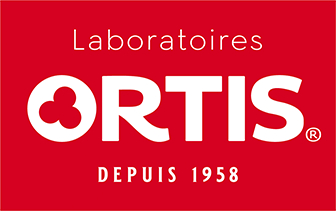
Coffee
Latin name
Origin
Used part
Active components
Xanthine alkaloids (caffeine, theophylline, theobromine): stimulate the central nervous system and the cardiovascular system, reducing drowsiness and increasing vigilance.
Phenols (chlorogenic acid): this compound is known as an antioxidant, but also slows down the absorption and release of glucose in the blood after a meal.
Usage
Bibliographical references
- Coffee acutely modifies gastrointestinal hormone secretion andglucose tolerance in humans: glycemic effects of chlorogenic acidand caffeine.
Kelly L Johnston, Michael N Clifford, and Linda M Morgan
Am J Clin Nutr October 2003 vol. 78 no. 4 728-733
AJCN: http://ajcn.nutrition.org/content/78/4/728.abstract
- Antioxidant-rich coffee reduces DNA damage, elevatesglutathione status and contributes to weight control: results froman intervention study.
Bakuradze T, Boehm N, Janzowski C, Lang R, Hofmann T, StockisJP, Albert FW, Stiebitz H, Bytof G, Lantz I, Baum M, Eisenbrand G.
Mol Nutr Food Res. 2011 May;55(5):793-7.
Pubmed: http://www.ncbi.nlm.nih.gov/pubmed/21462335
- Medium light and medium roast paper-filtered coffeeincreased antioxidant capacity in healthy volunteers: results of arandomized trial.
Corrêa TA, Monteiro MP, Mendes TM, Oliveira DM, Rogero MM,Benites CI, Vinagre CG, Mioto BM, Tarasoutchi D, Tuda VL, César LA,Torres EA.
Plant Foods Hum Nutr. 2012 Sep;67(3):277-82.
Pubmed: http://www.ncbi.nlm.nih.gov/pubmed/22766993
- Roasted coffees high in lipophilic antioxidants andchlorogenic acid lactones are more neuroprotective than greencoffees.
Chu YF, Brown PH, Lyle BJ, Chen Y, Black RM, Williams CE, LinYC, Hsu CW, Cheng IH.
J Agric Food Chem. 2009 Oct 28;57(20):9801-8.
Pubmed: http://www.ncbi.nlm.nih.gov/pubmed/19772322
- A perception on health benefits of coffee.
George SE, Ramalakshmi K, Mohan Rao LJ.
Crit Rev Food Sci Nutr. 2008 May;48(5):464-86.
Pubmed: http://www.ncbi.nlm.nih.gov/pubmed/18464035
- Antioxidant properties of roasted coffee residues.
Yen WJ, Wang BS, Chang LW, Duh PD.
J Agric Food Chem. 2005 Apr 6;53(7):2658-63.
Pubmed: http://www.ncbi.nlm.nih.gov/pubmed/15796608
- In vitro antioxidant and ex vivo protective activities ofgreen and roasted coffee.
Daglia M, Papetti A, Gregotti C, Bertè F, Gazzani G.
J Agric Food Chem. 2000 May;48(5):1449-54.
Pubmed: http://www.ncbi.nlm.nih.gov/pubmed/10820041
The health claims that feature on our website in relation to the plants contained in our products are compliant with the list of health claims awaiting final assessment by the Community authorities (cf. website of the European Commission: http://ec.europa.eu/nuhclaims/). However, they may be subject to modification following their assessment by the national competent authorities.
The health claims relating to other nutrients or substances contained in our products that feature on our site are compliant with Regulation No. 432/2012 of the Commission of 16 May 2012 which establishes a list of authorised health claims authorised in relation to food products, other than those in reference to the reduction of the risk of disease as well as community-based development and child health (cf. website of the European Commission: http://ec.europa.eu/nuhclaims/).

 Belgique
Belgique  België
België  France
France  Italia
Italia  Portugal
Portugal  España
España  United Kingdom
United Kingdom  Κύπρος
Κύπρος 